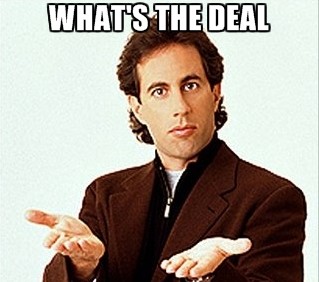I’m particularly excited about today’s sports nutrition tip from Brian St. Pierre. As in the past, this tip is a “teaser” from the Nutrition Guide he wrote for my new program Ultimate Hockey Transformation.
Today’s tip covers a topic that is essential to fueling consistently high performance and making significant gains in off-season training. It also happens to be one of the most misunderstood topics. Check it out and post any questions/comments you have below the article.
Enjoy! – KN
While carbs have taken a beating in fat-loss circles over the past decade or so, the fact of the matter is carbs are not evil. Nor are they inherently fattening.
In fact, as someone who is exercising, you NEED carbs. That’s right, you need them. And getting in the right carbs in the right amounts can boost your performance, improve your health, and make you leaner and more muscular!
What’s The Deal With Carbs?

When it comes to eating carbs, it comes down to 2 things:
You don’t have to over-think this, as it does not mean low-carb. It also doesn’t mean avoiding carbs at some times and having them at others. It is simply about choosing quality carbohydrates, and eating them in reasonable amounts.
Many people try to go too low-carb while training hard, and while it may work in the beginning, eventually it will come back to haunt you. Low-carbohydrate intake combined with hard training will lead to thyroid problems, cortisol and stress problems, as well as a decrease in testosterone and increase in estrogen. This will stall fat loss, inhibit muscle gain, decrease performance, lower your energy, worsen your mood and overall just make you feel like crap.
So just don’t do it. The goal is to get in enough carbs so that you fuel your training, optimize recovery, and maintain optimal hormone status, but not so much that you feel sluggish and over-fed. To do that is actually easier than you might imagine.
So How Many Carbs Should You Eat?
You already know to have 1-2 palm-sized portions of a protein rich food, and 1-2 fists of veggies at every meal, now we are going to add to that. For most meals you should have:
To give you an idea, here is a list of quality carbohydrate sources:
In general, women should have 1 cupped handful of starchy carbs or fruit at most meals, and men should have 2 cupped handfuls. Simple as that.
For the most part, this habit is just about getting most of your carbs from whole food sources, and eating them in reasonable amounts. However, this is just a starting point.
If you want to gain weight, or are really active, you should add another cupped handful of carbs to a few meals. And if you want to lose weight, or are only mildly active, you might want to remove a cupped handful of carbs from a few meals.
And remember, this is just a starting point. You should adjust your intake to best meet your: needs, hunger and fullness cues, energy levels, mood, training performance, body composition progress, and overall results.
Overall now you should be working on:
-Brian St. Pierre, MS, RD, CSCS, CISSN, PN1
P.S. For more information on how to get a copy of Brian’s incredible hockey nutrition manual, click here: Ultimate Hockey Transformation
Brian is a Registered Dietitian and received his Bachelor’s in Human Nutrition and Dietetics from the University of Maine, where he also received his Master’s in Food Science and Human Nutrition. He is a Certified Sports Nutritionist as well as a Certified Strength and Conditioning Specialist.
Brian worked for three years at Cressey Performance as the head Sports Nutritionist and as a Strength and Conditioning Coach, working with hundreds of athletes and recreational exercisers of all types. During this time, he also authored the High Performance Handbook Nutrition Guide, Show and Go Nutrition Guide, Ultimate Hockey Nutrition and dozens of articles for publication.
Nowadays, he works closely with Dr. John Berardi as a full-time coach and a nutrition educator at Precision Nutrition. In particular, working closely with our elite athletes and fitness professionals. As part of the Precision Nutrition mission, he helps to deliver life-changing, research-driven nutrition coaching for everyone.
Please enter your first name and email below to sign up for my FREE Athletic Development and Hockey Training Newsletter!
“Kevin Neeld is one of the top 5-6 strength and conditioning coaches in the ice hockey world.”
– Mike Boyle, Head S&C Coach, US Women’s Olympic Team
“…if you want to be the best, Kevin is the one you have to train with”
– Brijesh Patel, Head S&C Coach, Quinnipiac University